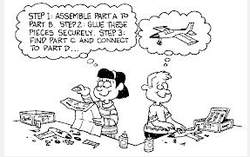
For this week we are supposed to look at visual learners and understand what is a visual learner and how technology can help them. I was excited about this assignment because when teaching a language comprehensible input is so, so important. Comprehensible input (a theory developed by Stephen Krashen) basically states that you must first understand what you are learning or seeing in order to learn it in another language. The video below is long but skip forward to about minute 3:25 and you will see a demonstration of how comprehensible input works and how integral visuals are.
Isn't that amazing?! My only language other than English is Spanish but I think it is so neat to see how we can learn even a few words in German quickly. Now how much cooler would that be using today's technology?
I am getting ahead of myself. My professor wants me to first talk about what visual learners are. I did find a list of the characteristics of visual learners created by Lehigh University.
• Learns through seeing
• Reader/observer
• Scans everything; wants to see things, enjoys visual stimulation
• Enjoys maps, pictures, diagrams, and color
• Needs to see the teacher’s body language/facial expression to fully comprehend
• Often closes their eyes to visualize or remember something
• Daydreams; a word, sound, or smell causes recall and mental wandering
• Usually takes detailed notes to absorb the information
• May think in pictures and learn best from visual displays such as diagrams, illustrated
textbooks, overhead transparencies, PowerPoint presentations, videos, and handouts
• Tends to prefer sitting at the front of the classroom to avoid visual obstructions
• Is usually neat and clean
• Finds something to watch if they are bored
• Benefits from illustrations and presentations that use color
• Is attracted to written or spoken language rich in imagery
• Finds passive surroundings ideal
I think what I found most surprising about this list is that it is important that visual learners need to see the teacher's body language/facial expressions to fully comprehend but then if they tend to daydream they are prone to miss a lot of that vital information.
When it comes to helping visual learners there are a myriad of suggestions. Here are a few I found helpful from education.com: "Let the picture load" because they must, in one sense, rewind the tape to find the answers. "Allow Piles" because that is how best they organize there papers, not in file cabinets but in piles they can see (this would drive me CRAZY but then I am not a visual learner).
How does this change teaching and learning? I think more radically for some content areas than for mine. As a language teacher visuals are vital in teaching language whether it is through realia or a poster illustrating the word they are learning. This of course gets complicated as you begin to teach grammar but when I figure out just how to do that I will let you know!
I am getting ahead of myself. My professor wants me to first talk about what visual learners are. I did find a list of the characteristics of visual learners created by Lehigh University.
• Learns through seeing
• Reader/observer
• Scans everything; wants to see things, enjoys visual stimulation
• Enjoys maps, pictures, diagrams, and color
• Needs to see the teacher’s body language/facial expression to fully comprehend
• Often closes their eyes to visualize or remember something
• Daydreams; a word, sound, or smell causes recall and mental wandering
• Usually takes detailed notes to absorb the information
• May think in pictures and learn best from visual displays such as diagrams, illustrated
textbooks, overhead transparencies, PowerPoint presentations, videos, and handouts
• Tends to prefer sitting at the front of the classroom to avoid visual obstructions
• Is usually neat and clean
• Finds something to watch if they are bored
• Benefits from illustrations and presentations that use color
• Is attracted to written or spoken language rich in imagery
• Finds passive surroundings ideal
I think what I found most surprising about this list is that it is important that visual learners need to see the teacher's body language/facial expressions to fully comprehend but then if they tend to daydream they are prone to miss a lot of that vital information.
When it comes to helping visual learners there are a myriad of suggestions. Here are a few I found helpful from education.com: "Let the picture load" because they must, in one sense, rewind the tape to find the answers. "Allow Piles" because that is how best they organize there papers, not in file cabinets but in piles they can see (this would drive me CRAZY but then I am not a visual learner).
How does this change teaching and learning? I think more radically for some content areas than for mine. As a language teacher visuals are vital in teaching language whether it is through realia or a poster illustrating the word they are learning. This of course gets complicated as you begin to teach grammar but when I figure out just how to do that I will let you know!
Isn't Wordle cool?! It was so easy. I just cut and pasted the poem into the create box, hit go and boom here was my wordle! The more words are used the bigger they become. You then can choose your font and color combination. It was lots of fun.
Now let's move on to Tagxedo. This is another cool word visual that you can use in class. It would work great for comprehensible input too because you can choose a shape, like the map of the U.S. or a hand or a bird, tree, etc and then put words that relate to that shape. But for the purposes of the blog and my class I have included words about Netiquette. Like Wordle you can choose your font and color. One big difference is that when your cursor goes over a word the word gets bigger so you can see it. That works well since some are so small. I had lots of fun playing on this!
Now let's move on to Tagxedo. This is another cool word visual that you can use in class. It would work great for comprehensible input too because you can choose a shape, like the map of the U.S. or a hand or a bird, tree, etc and then put words that relate to that shape. But for the purposes of the blog and my class I have included words about Netiquette. Like Wordle you can choose your font and color. One big difference is that when your cursor goes over a word the word gets bigger so you can see it. That works well since some are so small. I had lots of fun playing on this!
Finally, the last cool way to create visuals is from the site bubbl.us. This site lets you create graphic organizers easily. For language teachers this is especially helpful if you are working through a difficult academic text with an intermediate class. In my Techniques of Teaching English as a Second Language class last semester we learned that one of the best ways to help students organize, sort and understand higher level language is to use graphic organizers. There are many different forms this can take but one is a concept definition map. I had to make one for a lesson I was teaching on the Volstead Act. The lesson was geared toward high intermediate to low advanced ELLs (English Language Learners). In this lesson I modified the original Volstead Act to somewhat simpler language that would be easier for the students. Then I created a concept definition map. It took HOURS to figure out how to do that. It was very frustrating and I even had to get help from family members who are a bit more computer savvy than me and they still had trouble. I really, really wish I had known about bubbl then because I could have finished the map in about 10 minutes. Below is my concept definition map.
So what does this mean for us? I think I have touched on this already but just in case I will summarize it this way: through technology we have the opportunity to make learning more accessible for ALL our students but especially for those who need visuals the most. Now their learning will not primarily be auditory but will be easily supported through visuals. Honestly these were not that hard to do and were quick once I was acclimated to the site (that only took a couple minutes). Tagxedo was the hardest only because I had to download a program but even then it was easier than I thought it would be. So go for it! Use visuals from technology to help your students and ultimately yourself. I think it will make us all better, more effective teachers.
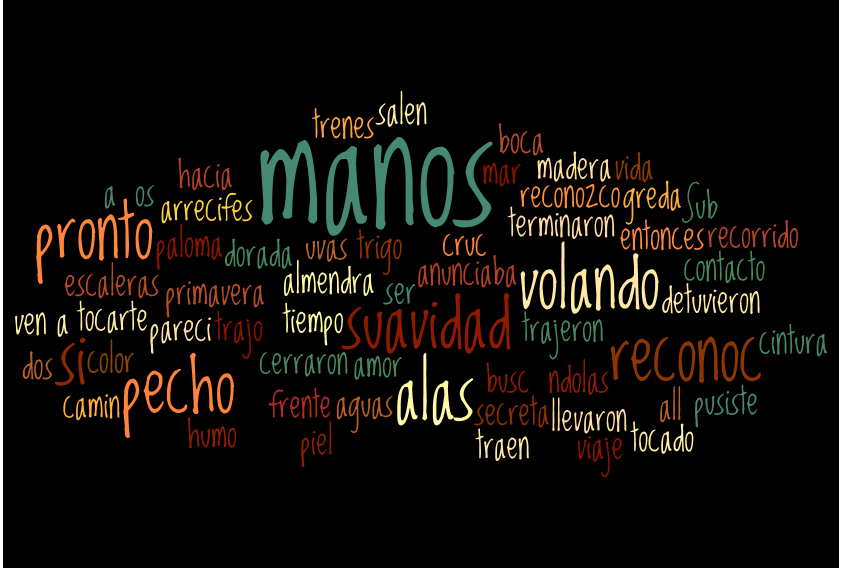
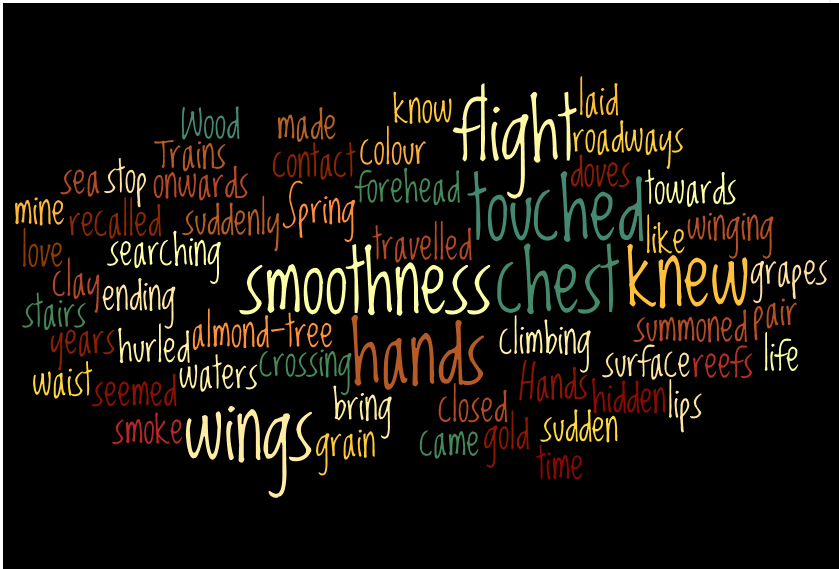
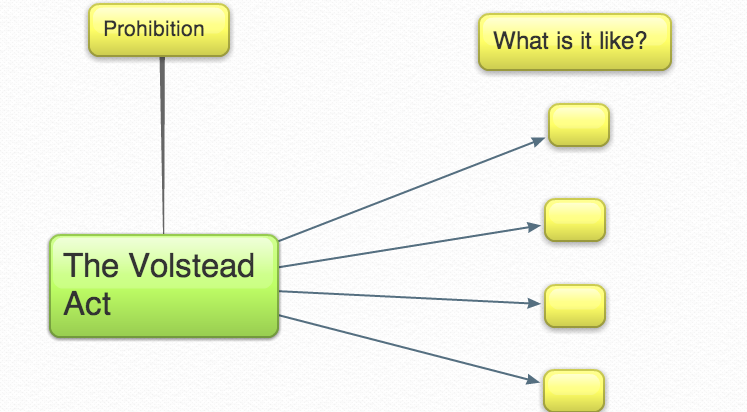



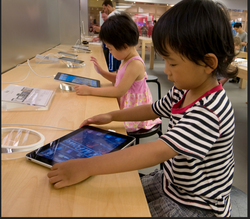
 RSS Feed
RSS Feed